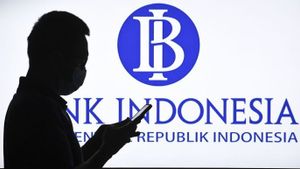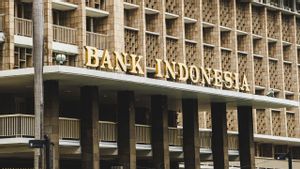JAKARTA – Bank Indonesia (BI) reported that Indonesia's external debt (ULN) position at the end of the fourth quarter of 2022 was US$396.8 billion.
BI Communication Department Erwin Haryono said Indonesia's external debt in the fourth quarter of 2022 contracted annually by 4.1 percent (year on year/yoy), continuing the contraction in the previous quarter of 6.7 percent.
"Developments in the external debt position in the fourth quarter of 2022 were also influenced by factors of change due to the weakening of the US dollar against the majority of global currencies," he said in a written statement, Tuesday, February 14.
Even though it was stated to have decreased quarterly in December 2022, this amount was USD 4.2 billion higher compared to November 2022 which amounted to USD 392.6 billion.
"Indonesia's foreign debt in the fourth quarter of 2022 remains under control," he stressed.
Erwin detailed, the government's external debt position in the fourth quarter of 2022 was recorded at US$186.5 billion or on an annual basis experienced a contraction of 6.8 percent.
"The development of external debt was driven by an increase in portfolio investment in the domestic Government Bonds (SBN) market in line with the positive sentiment that maintained the confidence of global market players," he said.
In addition, Erwin continued, there was a net withdrawal of foreign loans used to support program and project financing.
"The government's external debt plays an important role in supporting the government's efforts to finance the productive sector and prioritize government spending, including continuing efforts to accelerate the National Economic Recovery (PEN) program," he said.
SEE ALSO:
Meanwhile, the position of private external debt in the fourth quarter of 2022 was recorded at US$201.2 billion, or on an annual basis experienced a contraction of 1.8% (yoy), continuing the contraction in the previous quarter of 2.0%.
"This development was driven by net payments of trade debt, notes, and loans in line with the quarterly pattern of external debt payments," he added.
Erwin ensured that the structure of Indonesia's external debt remained healthy, as demonstrated by Indonesia's external debt which was still dominated by long-term tenors, with a share of 87.3 percent of the total.
"Indonesia's external debt remained under control in the fourth quarter of 2022, as reflected in the ratio of Indonesia's external debt to Gross Domestic Product (GDP) which was maintained at around 30.1 percent, a decrease compared to the ratio in the previous quarter of 30.3 percent," he said.
"Bank Indonesia and the government continue to strengthen coordination in monitoring the development of external debt, supported by the application of the precautionary principle in its management," concluded Erwin.
The English, Chinese, Japanese, Arabic, and French versions are automatically generated by the AI. So there may still be inaccuracies in translating, please always see Indonesian as our main language. (system supported by DigitalSiber.id)
















